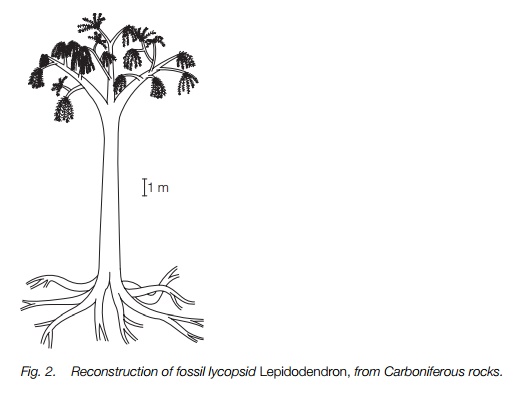Chapter: Plant Biology : Spore bearing vascular plants
Fossil Lycopsida
Fossil Lycopsida
The clubmosses and quillworts are living remnants of a once much larger group with a rich fossil record including trees in late Devonian and Carboniferous times. Fossil lycopods are known from the early Devonian period onwards.
Devonian lycopods mostly resembled living homosporous clubmosses like Lycopodium, being herbaceous and most with dichotomous branching. Sporangia were sometimes stalked and borne on the leaves. By the Carboniferous period, herbaceous plants clearly seen to be heterosporous appear, and so closely resemble Selaginella that they are placed in the same genus.

The best known fossil lycopods were trees, measuring ≥30 m. They are common fossils, beautifully preserved from the Carboniferous period in Britain and North America, and are important constituents of coal. They can be ascribed to the genus Lepidodendron which had a long unbranched trunk with dichotomous branching at its tip (Fig. 2). Strobili were produced at the branch ends and these were heterosporous. Microsporangia and megasporangia were similar to those of living heterosporous lycopods and the gametophytes were enclosed within the spore wall. In at least one species only one megaspore was produced within the sporangium and the whole structure was enclosed by a leaf-like outgrowth, to be dispersed together.
Related Topics